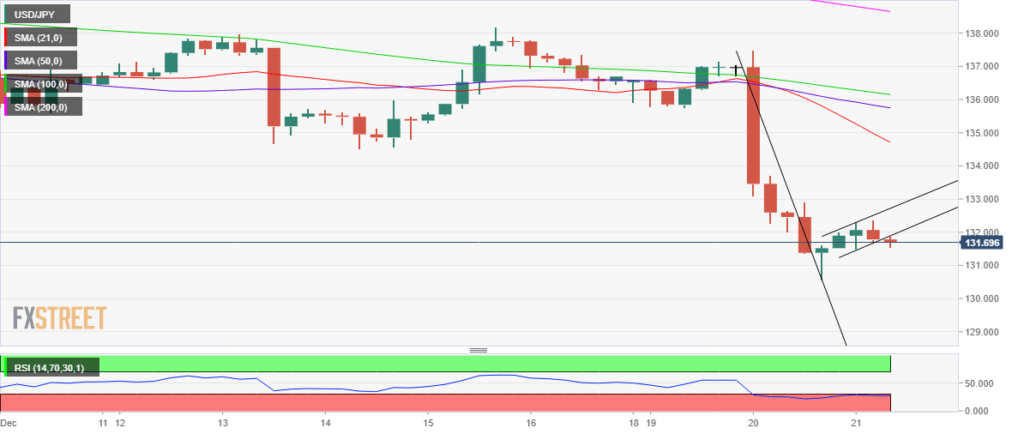In this article, we have covered the highlights of global market news about the GBP/USD, USD/JPY, NZD/USD and EUR/USD.
According to ING, GBP/USD may return to the 1.15-1.18 region in the new year.
The GBP/USD pair is struggling to get beyond the 1.2150 region. In the following year, ING economists predict that the pair will once again trade between 1.15 and 1.18.
The outlook for 2023 continues to be difficult. “Due to the many strikes, there won’t be many data releases in the UK in the next two weeks, and tomorrow’s first GDP report is unlikely to affect the market. Before the first week of January, there are no planned Bank of England speakers.
As a recessionary climate and susceptibility to market volatility may prompt a return to Cable’s 1.15-1.18 range, “we continue to anticipate largely negative risks for the Pound in the new year.”
“During this holiday season, GBP/USD might range between 1.2100 to 1.2250.”
USD/JPY falls over 131.50 before US data
Just above the 131.50 support, USD/JPY is licking its wounds as bears wait to resume the downturn. The pair needs to be supported more by the stabilizing US dollar, the improvement in risk sentiment, or the Treasury rates.
Despite conflicting opinions expressed by Japanese officials about the Bank of Japan’s (BoJ) unexpected policy change, the currency pair remains fragile. Tuesday’s surprise change to the BoJ’s yield control policy startled the markets and caused the Japanese Yen to jump 3.8% versus the US Dollar.
However, the USD/JPY pair has formed a bear flag pattern on the four-hour chart and is ready to breach its most recent consolidation mode below 132.00 to the downside.
The bearish continuation pattern will be confirmed if a four-hourly candlestick closes below the 131.89 rising trendline support level.
A new downswing will start, necessitating a retest of the round number of 131.00. The next target on sellers’ radars will be the four-month low of 130.57, which is farther south.
Bears should exercise caution since the 14-day Relative Strength Index (RSI) is flat and in the oversold region.

NZD/USD remains below 0.6300, a nearly three-week low, despite a minor US Dollar gain.
On Wednesday, there was intense selling pressure on the NZD/USD pair, and during the first part of the European session, it reached a nearly three-week low. The pair is now trading close below the 0.6300 level, down around 0.75% for the day, and under pressure from a bit of strengthening of the US Dollar.
The Fed’s hawkish remarks last week and the Bank of Japan’s policy change, which led to a sell-off in bond markets on Tuesday, are continuing to drive up the rates on US Treasury bonds. The benchmark 10-year US government bond yield drops to a new monthly low and aids in reviving dollar demand, which is perceived as dragging on the NZD/USD pair.
The positive domestic figures, which indicate that the trade deficit decreased from $2298 million to $1,863 million in November, do not provide any relief for the New Zealand Dollar. However, a rebound in the perception of risk worldwide might discourage traders from making excessive optimistic bets on the safe-haven dollar and boost the perceived riskier Kiwi.
EUR/USD may find some stability around 1.0600 by year’s end – ING
On Tuesday, the EUR/USD saw modest daily gains but had trouble building positive momentum. ING economists predict the pair to fluctuate around 1.06 in the last weeks of the year.

We are Keeping an eye on the turbulence of the energy market. “We believe that as volatility begins to decline, the EUR/USD may find some stability around 1.0600 through the end of the year. However, should market sentiment worsen, particularly in the energy sector, a decline to levels below 1.0500 is probable.
“Until the German CPI results for December are announced, no important data releases will be noted in the next two weeks for the Euro (3 January). No speakers from the European Central Bank are planned.
Please click here for the Market News Updates from 20 December, 2022.

